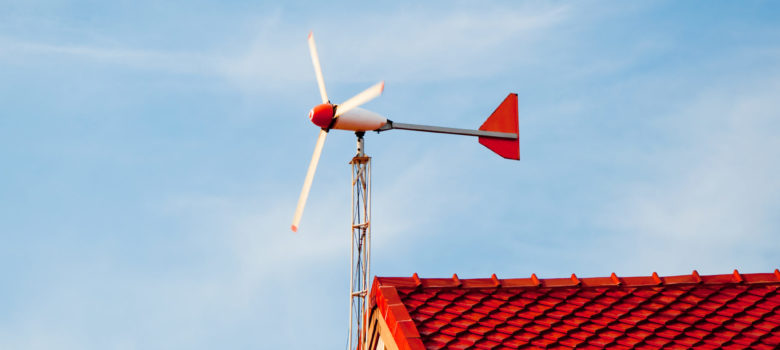
Wind turbines allow you to produce 100% clean, free electricity. For the majority of people living in suburban settings, wind doesn’t make as much sense as solar energy, but if your home is in an exposed windy area, and you can put up a decent sized turbine with a bit of elevation, it can be an option.
Different kinds of wind turbine
Wind turbines work by harness kinetic energy from the air and converting it into electricity using a generator. There are several different types of wind turbine, but all work by this general principle.
Battery-less grid tied systems:
Often considered to be the best kind of wind turbine, the battery-less grid tied systems are simple, environmentally friendly, and high performance. These turbines produce as much electricity as possible, also feeding in to the grid. They’re great for anybody wishing to reduce reliance on energy companies, but not so good if you’re looking to go off-grid entirely. The problem is that there’s no storage for the energy, so when the wind stops blowing you’re back to buying energy from the grid.
Grid-tied system with battery backup:
The problem we mentioned above can be remedied by using a grid-tied turbine with battery storage. It’s the same premise, but with a bank of batteries that stores electricity and feeds it back in to the system if there is a grid power cut. The only downside is that the battery can be expensive.
Off-grid systems:
If you are hoping to limit your dependence on the mains as much as possible, you will need a larger turbine, or multiple smaller turbines – size matters. If you’re just looking to produce enough electricity for some garden lights then you’d be okay with a smaller one.
What are the wind speed requirements?
Check yourself before you wreck yourself! Your very first step should be to use the Carbon Trust website to get an estimated wind speed for your chosen location. Process some basic information and they’ll provide you with an average wind speed and potential energy output. You’re looking for an average wind speed in excess of 5m/s.
What about planning permission?
If you live in England or Scotland, then certain wind turbines are permitted without planning permission, but they require adherence to strict conditions. However f you live in Wales or Northern Ireland you will require planning permission no matter what the type of system you are going for. As a rule, it’s generally just a good idea to contact your local council to ask about planning permission if you’re considering installing a wind turbine. These days you’ll find that most local authorities encourage the installation of more renewable energy systems. If there are any objections it’s better to find out sooner rather than later, when you might find yourself having to pay to have it moved or taken down.
For more on planning permission for wind turbines, take a look at our full guide.
How much do wind turbines cost?
It’s very difficult to provide an estimated costing for wind turbines, since it’s so dependent on the size and specifics of the mounting. It is worth noting though that wind turbines benefit from significantly reduced VAT rates, coming in at just 5%.
Installation costs also vary massively, since a free-standing turbine, while more efficient, will cost significantly more.
For equipment and installation of a pole-mounted system, you can expect anywhere from £10k for a 2.5kW turbine, up to £30k+ for a system of 6kW or above.
Think we missed something? Do you have a different opinion?
Comment below to get your voice heard…



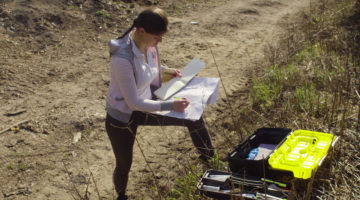
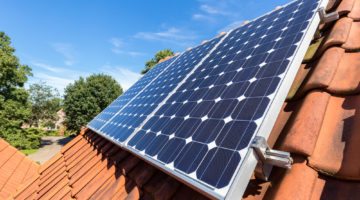
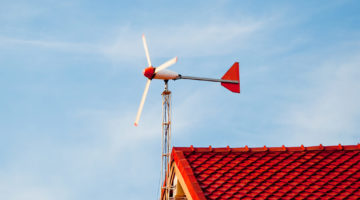
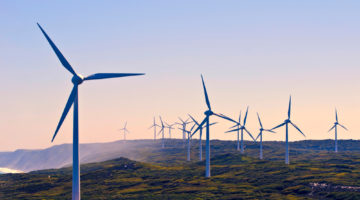





What about tying in a wind turbine with PV’s on battery backup for night time power generation to be as off grid as possible in suburban areas?
Hi, I have developed a wind turbine which would revolutionize domestic and small scale wind generation.
It would provide enough energy to power a house.
I have also invented a fan heater which is 7 times more efficient than any other fan heater. If you are interested in buying the IP please get in touch. cheers
Hi, have you progressed you project yet?
How do I get in touch?
Can I install a wind power and battery system to charge my electric car charger separately from the grid ???
Hello Drew, I would be interested ininformation regarding your domestic wind turbine.
Not very helpful…does give any help on products, where to find them, installers etc. Doesnt help actually get started. All hypothetical.
Indeed of UK advice/help/data on domestic off grid resources.. Its like they pay lip service to green .. whilst doing as much as possible to deter folk from going green . I wonder why .. No I dont.! $$$$££££$$$$££££$$$$££££
The 4 story building `i m in is next to another one just 1 m away with an orientation that seems to funnel wind most of the time. I could put 1 or more small turbines up the wall linked to a battery like on a boat. How can I test the average wind speed to see if it is worthwhile? Is this a DIY job? would some turbines be better than others? where is there info about batteries and inverters please
You can’t put wind turbines as you like on your house or property grounds. There are strict regulations under what conditions and on what buildings you can install wind turbines. Read up on it.
Hi. Nice website but I spent 15 mins looking at Carbon Trust website as directed but they don’t offer local wind data. Perhaps they did once but not now. Is there somewhere else I can look
We have solor with battery large can we use it use it for the house and wind to top it up
why then am i looking at one 5kw for just 1800 euro at tesup?
I am interested to find out who can provide a wind turbine to produce 240 volts at 35amps
I would like to install a wind turbine as a backup with load shedding. Please send information so that one can make an informed decision. Amps needed for lights, power back up batteries for security and fence alarm .